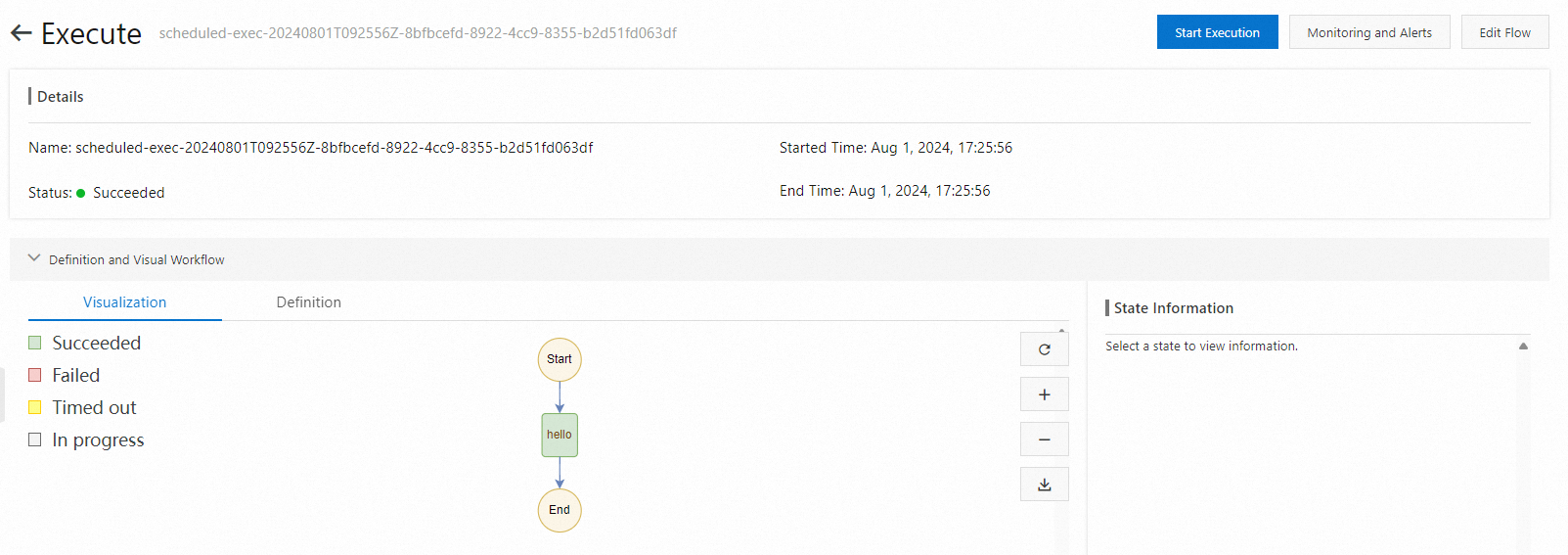This topic describes how to view execution details in the Serverless Workflow console or by using a CLI.
View execution details in the Serverless Workflow console
Log on to the Serverless Workflow console.
On the Flows page, click the name of the workflow whose execution details you want to view.
On the Flows page of the workflow, select the execution that you want to view.

On the Execute page, view the workflow definition, result, visualization information, input, and output of the execution.

View executions by using a CLI
You can run the following command to view an execution of a workflow:
aliyun fnf DescribeExecution --FlowName asdasd --ExecutionName vvvExpected output:
{ "Name": "vvv", "FlowName": "asdasd", "FlowDefinition": "Type: StateMachine\nName: asdasd\nSpecVersion: v1\nStartAt: Hello World\nStates:\n - Type: Pass\n Name: Hello World\n End: true\n", "Input": "{\n \"key\": \"hello world\"\n}", "Output": "{\"key\":\"hello world\"}", "Status": "Succeeded", "StartedTime": "2024-06-18T07:58:39.968Z", "StoppedTime": "2024-06-18T07:58:40.084Z", "RequestId": "8ff56c05-5316-0d92-f32e-1408dfafe778" }You can also run the following command to query all executions of a workflow.
aliyun fnf ListExecutions --FlowName cli_guide_1 --Limit 1Expected output:
{ "Executions": [ { "Name": "vvv", "FlowName": "asdasd", "FlowDefinition": "Type: StateMachine\nName: asdasd\nSpecVersion: v1\nStartAt: Hello World\nStates:\n - Type: Pass\n Name: Hello World\n End: true\n", "Input": "{\n \"key\": \"hello world\"\n}", "Output": "{\"key\":\"hello world\"}", "Status": "Succeeded", "StartedTime": "2024-06-18T07:58:39.968Z", "StoppedTime": "2024-06-18T07:58:40.084Z" } ], "NextToken": "CAZDM5MzIzOTY0MmQzNDY1Mzg2NDJkMzgzNjY2MzQyZDM5NjIzNDM2NjM2NjY1NjYzNDY1NjI2MjIzN*****", "RequestId": "c6574f75-97e0-e4bc-897c-e9fa48625438" }NoteThe Limit parameter specifies the number of executions you want to query. If an execution involves more data, the result contains
NextToken. In the next query, you can use theNextTokenparameter to specify the start position of the query.